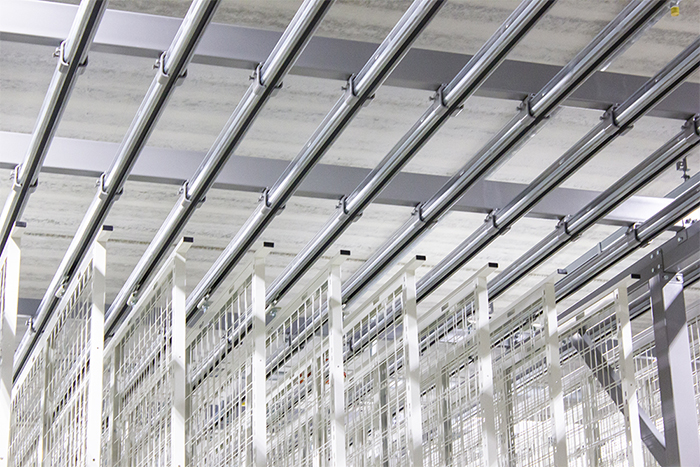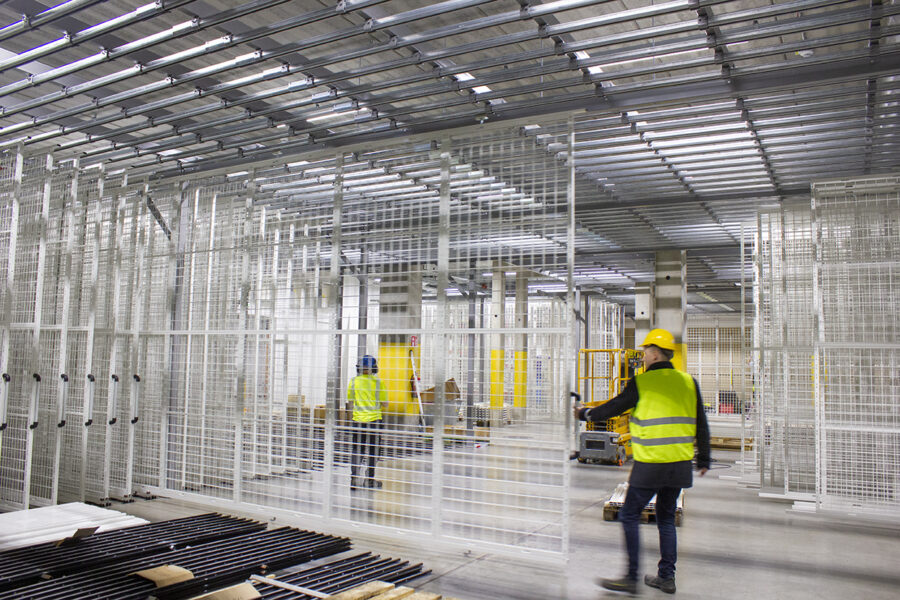Sliding mesh walls with the 900 series for a huge art storage

Helaform’s latest 900 series, launched at the beginning of the year, has quickly gained a reputation for high quality. This reputation gained the confidence of Metallivalmiste A.Laaksonen, a manufacturer of archive and movable shelves. They ended up using the 900 series’ sliding track systems to build movable mesh walls in their client’s huge art storage. Hundreds of mesh walls were installed side by side in two halls of more than a thousand square metres in size.
Purpose of use
The customer had a need for mesh walls for art archiving, specifically designed for archiving large painting collections. The sliding mesh walls were massive, some as large as 9 x 4 metres, providing plenty of space for the safe storage of valuable artworks. The walls had to be neatly “bundled” next to each other when in their normal position and, if necessary, they can be easily pulled out thanks to the sliding track, which makes it easier to handle the paintings.

The weight of the mesh wall guided the selection of the product series
First, it was determined that the weight of one empty wall was about 450 kg, and when the weights of the hanging paintings and frames were taken into account, it became clear that the 500 series, with its load capacity of 500 kg, was not enough for this project. On the other hand, the 2000 series would be too oversized, as the expected additional weight would be only a couple hundred kilogrammes. Thus, the 900 series was the perfect solution for this project. After selecting the appropriate series, Helaform and the customer discussed how much space the 900 series track systems require, what parts are needed and how they should be fixed to the support structures manufactured by the customer.

Structures and attachment
Metallivalmiste A. Laaksonen built sturdy frame structures to support the sliding mesh walls. KKL-900 soffit brackets (without bolts) were welded to the lengthwise support beams of these structures and K-900 sliding tracks were threaded into them. The brackets also had tightening connecting screws that can be used at the tracks’ joints, but also ensure that the track cannot move inside the brackets. Holes were made in the upper parts of the mesh walls, to which 100 mm hanger bracket bolts were installed. And when the bolts were already fixed in place, it was easy to lift the mesh walls up to hang on the MPS-900 hangers inside the sliding track.

Bottom guides and finishing touches
In order for the mesh walls to move straight and steadily when valuable paintings are attached to them, special attention was paid to the bottom guides. Rollers were installed in the lower part of the walls, which ran on the bottom guide track mounted on the floor. In addition, another set of guide rollers were placed horizontally on the other end of the bottom track, which ensured that the walls could not swing sideways. The bottom guide rollers do not carry the weight of the mesh wall at all, rather, their purpose is to guide the movement of the wall from below.
Once the distance that the mesh wall should run on the track was determined, KP-900 stops were fastened at both ends of the track, ensuring that the wall would stop in exactly the right place. Finally, sturdy handles were installed on the mesh walls, making them easy and convenient to move.












